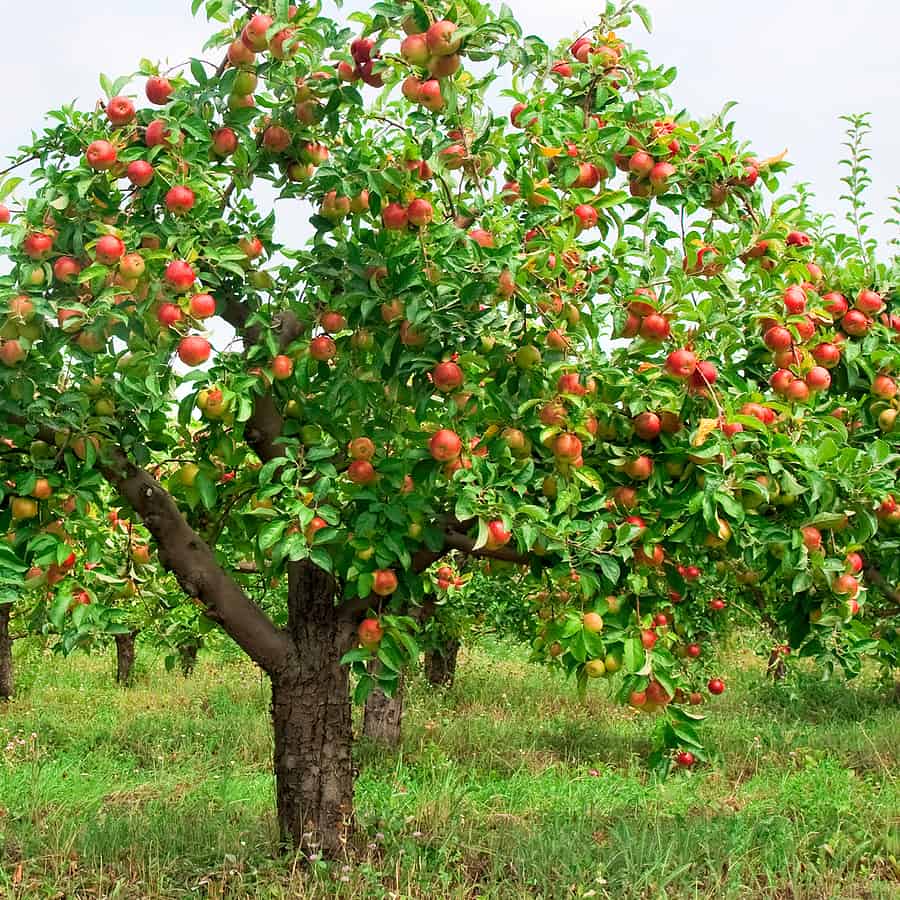In the article “How Many Apples Grow On A Tree,” we explore the intriguing question of abundance in nature. Have you ever wondered just how many apples can actually grow on a single tree? It’s a fascinating topic that often leads to discussions about agricultural yield, optimal tree cultivation, and the astonishing potential of nature’s bounty. Join us as we delve into the fascinating world of apple trees and uncover the surprising answer to this age-old question.
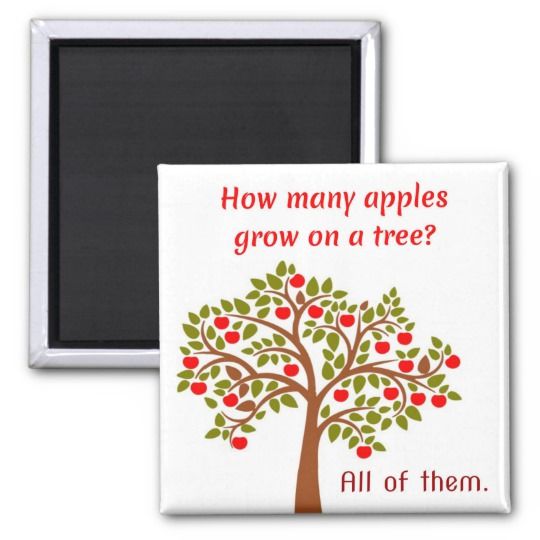
Factors Affecting Apple Tree Yield
Tree Age
The age of an apple tree plays a crucial role in determining its yield. Young apple trees typically have lower yields compared to mature trees. As a tree ages, its ability to produce flowers and fruits increases, resulting in higher yields. It takes several years for apple trees to reach their full productivity potential. Appropriate care and maintenance during the early years can contribute to the overall health and productivity of the tree.
Variety of Apple Tree
The variety of apple tree chosen also significantly impacts its yield. Different apple varieties have varying growth habits, flowering times, and fruit production capabilities. Some varieties are naturally more productive than others, producing larger quantities of apples per tree. It is essential to select apple tree varieties that are well-suited to the local climate and growing conditions to ensure optimal yields.
Weather Conditions
Weather conditions play a vital role in apple tree yield. Apple trees require a specific number of chilling hours during winter to break dormancy and promote healthy bud development. Insufficient chilling hours can result in reduced flower and fruit production. Additionally, extreme weather events such as spring frosts or heatwaves can adversely affect pollination, fruit set, and overall tree health, leading to lower yields.
Pollination
Pollination is a vital process that directly affects apple tree yield. Apples are not self-pollinating, meaning they require the transfer of pollen from one tree to another for fertilization to occur. Bees and other pollinators play a crucial role in pollinating apple trees by carrying pollen from the male flower parts (anthers) to the female flower parts (stigmas). Without proper pollination, fruit production will be limited, resulting in lower yields. Planting compatible pollination partners and ensuring adequate pollinator activity are essential for maximizing apple tree yield.
Pest and Disease Control
Pest and disease control measures are necessary to protect apple trees from potential damage and yield loss. Various pests and diseases can significantly impact the health and productivity of apple trees. Common apple tree pests include codling moth, apple maggot, and aphids, while diseases like apple scab, fire blight, and cedar apple rust can cause significant damage. Implementing integrated pest management strategies, including regular monitoring, proper sanitation measures, and targeted interventions, is vital for minimizing the negative effects of pests and diseases on apple tree yield.
Average Apple Yield per Tree
Different Apple Varieties
The average yield of apples per tree varies depending on the apple variety. Some apple varieties are known for their high yield potential, while others produce smaller quantities of fruit. It is essential to choose apple tree varieties based on the desired yield and other factors such as taste, texture, and disease resistance. Popular high-yielding apple varieties include Fuji, Honeycrisp, and Gala, while lesser-known varieties like Liberty and Enterprise can also offer satisfactory yields.
Tree Age and Size
The age and size of an apple tree impact its average yield. Young apple trees typically have lower yields compared to mature trees. As a tree grows and develops, its capacity to produce flowers and fruit increases, resulting in higher yields. Additionally, larger trees have the potential to bear more fruits than smaller ones due to the availability of more branches and space for flower and fruit development.
Cultural Practices
Proper cultural practices are essential for maximizing apple tree yield. These include regular pruning, adequate watering, appropriate fertilization, and mulching. Pruning helps maintain the tree’s shape, remove dead or diseased branches, and promote better air circulation and sunlight penetration, which can lead to higher yields. Providing sufficient water and nutrients through proper irrigation and fertilization is crucial for tree health and fruit production. Mulching around the base of the tree helps conserve soil moisture, regulate soil temperature, and suppress weed growth, all of which contribute to optimal tree growth and yield.
Fruit Thinning
Fruit thinning is a practice that involves selectively removing some of the developing fruits from the tree. Although it may seem counterintuitive, thinning the fruits helps improve the quality and size of the remaining ones, leading to higher overall yields. Thinning allows the tree to allocate its energy and resources more effectively, resulting in larger, healthier apples. It also reduces the risk of branches breaking under the weight of excessive fruit, and it helps prevent biennial bearing, where the tree produces a heavy crop one year and a sparse crop the next.
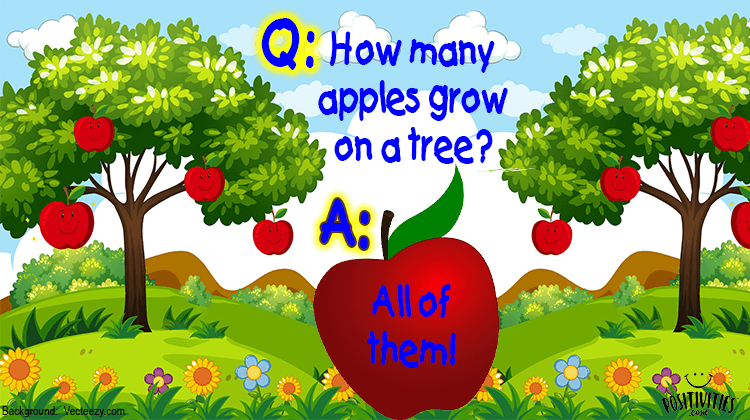
Calculating the Number of Apples on a Tree
Counting Apples Directly
One method of determining the number of apples on a tree is to count them directly. This can be done by visually inspecting the tree and carefully counting each apple. However, this method can be time-consuming and may not be practical for large orchards with hundreds or thousands of apple trees.
Estimating Apple Quantity
Estimating the number of apples on a tree can be done through various methods, such as estimating the number of fruits per branch or cluster and extrapolating the total based on the tree’s overall structure. This method requires a trained eye and experience in evaluating apple tree growth patterns and fruit development.
Weight-Based Estimation
Weight-based estimation involves estimating the total weight of the apples on a tree and then converting that weight into an approximate number of apples based on the average weight of an apple. This method requires the use of specialized weighing equipment and knowledge of the average weight of the specific apple variety being harvested.
Apple Tree Care for Maximum Yield
Pruning
Proper pruning techniques are crucial for maintaining the health and productivity of apple trees. Pruning helps remove dead, damaged, or diseased branches, opens up the tree’s canopy for better sunlight penetration and air circulation, and promotes the development of strong, fruit-bearing branches. It is recommended to prune apple trees during the dormant season to minimize stress and maximize regrowth potential.
Watering
Appropriate watering is essential for apple tree growth and yield. Consistent soil moisture ensures that the tree’s roots receive an adequate water supply, allowing for optimal nutrient uptake and overall tree health. It is important to water apple trees deeply and infrequently, ensuring the water reaches the deep roots rather than just the surface.
Fertilizing
Fertilizing apple trees provides them with the necessary nutrients to support healthy growth and maximize yield potential. Soil testing is recommended to determine nutrient deficiencies and develop a targeted fertilization plan. Typically, a balanced fertilizer with a ratio of nitrogen (N), phosphorus (P), and potassium (K) is applied in early spring and late fall to meet the tree’s nutritional requirements.
Mulching
Applying a layer of organic mulch around the base of apple trees offers numerous benefits for maximizing yield. Mulch helps retain soil moisture, suppress weed growth, regulate soil temperature, and improve soil fertility. Organic materials such as woodchips, straw, or compost make excellent mulching options.
Sunlight Requirements
Apple trees require an adequate amount of sunlight to maximize their yield potential. They generally need a minimum of six to eight hours of direct sunlight each day. Insufficient sunlight can result in decreased flower and fruit production and overall tree vigor. Proper site selection and regular pruning to maintain an open canopy are essential for ensuring optimum sunlight exposure.
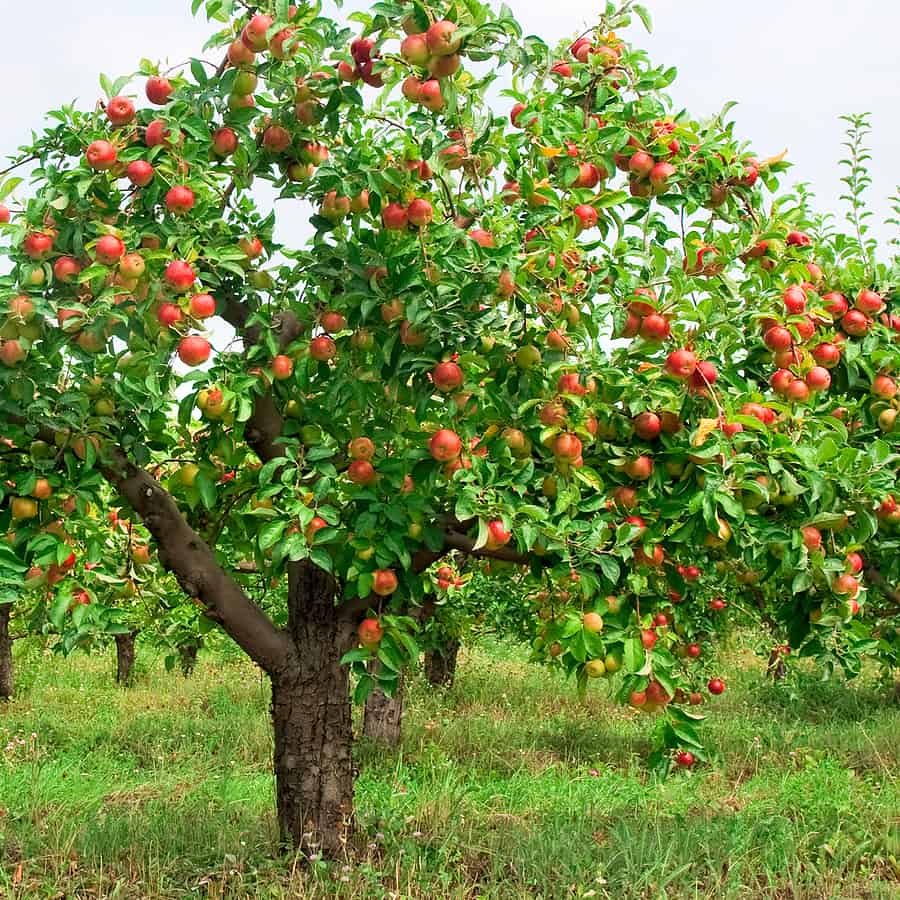
Harvesting and Storing Apples
Harvesting Time
Knowing the right time to harvest apples is crucial for obtaining the best quality and flavor. Apples should be harvested when they are fully mature but not overripe. Different apple varieties have different harvest times, so it is important to refer to variety-specific guidelines. Factors such as color, firmness, and ease of detachment from the tree can be indicative of readiness for harvest.
Proper Apple Handling
Gentle handling of apples during harvesting is essential to prevent bruising and damage. Apples should be carefully picked by hand or with specialized picking tools, avoiding excessive pressure or pulling. Dropping or throwing apples into harvesting containers should be avoided to minimize bruising.
Storage Conditions
Apples should be stored under specific conditions to maintain their quality and prolong their shelf life. The ideal storage conditions for apples include cool temperatures (around 32-40°F or 0-4°C), high humidity (around 90-95%), and proper ventilation to prevent the buildup of ethylene gas. Apples should also be stored away from other fruits and vegetables that produce ethylene gas, as this can accelerate ripening and result in premature decay.
Length of Storage
The length of time that apples can be stored depends on various factors such as apple variety, maturity at harvest, storage conditions, and post-harvest treatments. Some apple varieties have a longer storage life compared to others. It is important to regularly inspect stored apples for any signs of decay or deterioration and promptly remove any affected fruits to prevent further damage.
Maximizing Apple Tree Yield
Quality Soil Preparation
Proper soil preparation is essential for maximizing apple tree yield. The soil should be well-drained, fertile, and have a balanced pH level. Conducting a soil test helps identify any nutrient deficiencies or imbalances and allows for targeted soil amendments to optimize tree growth and yield potential.
Planting Density
The spacing and planting density of apple trees can significantly impact their yield. Apples should be planted with adequate distance between trees to provide enough space for airflow and sunlight penetration, which promotes optimum tree growth and fruit production. The specific planting density may vary depending on the apple tree variety and desired growth habit.
Proper Irrigation
Providing proper irrigation is crucial for maximizing apple tree yield. Apple trees generally require regular deep watering, especially during dry periods, to ensure sufficient moisture reaches the entire root system. Irrigation methods such as drip irrigation or soaker hoses help deliver water directly to the root zone, reducing water waste and promoting efficient water uptake.
Integrated Pest Management
Implementing integrated pest management (IPM) practices is vital for maximizing apple tree yield while minimizing the negative effects of pests. IPM involves a combination of cultural, biological, and chemical control methods to manage pests in a sustainable and environmentally friendly manner. Regular monitoring, early pest detection, and timely interventions are key components of an effective IPM program.
Thinning Fruit
Fruit thinning is an essential practice for maximizing apple tree yield. Removing excess fruit allows the tree to allocate its energy and resources more effectively, resulting in larger, higher-quality apples. Thin fruit clusters to an appropriate spacing, leaving enough room for the remaining fruits to grow and develop without crowding each other.
Annual Tree Maintenance
Providing annual maintenance to apple trees ensures their overall health and productivity. This includes regular pruning to remove dead or diseased branches, promoting proper air circulation and sunlight exposure. Applying appropriate fertilizers and soil amendments, as determined by soil testing, helps replenish nutrients for optimal tree growth. Regular monitoring for pests and diseases allows for early intervention and prevention of potential yield loss.
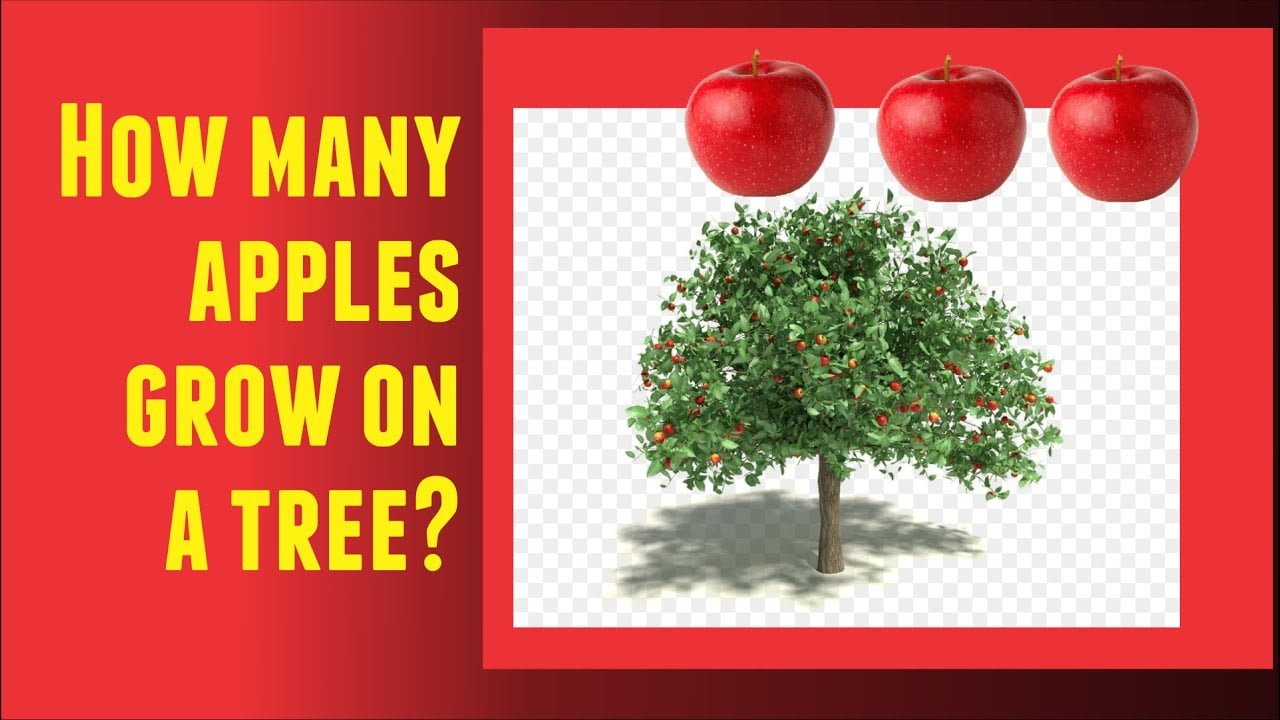
Factors Affecting Apple Tree Pollination
Self-Pollinating vs. Cross-Pollinating Apple Trees
Apple trees can be categorized as self-pollinating or cross-pollinating, based on their ability to produce viable fruit without external pollination. Self-pollinating trees have both male and female flower parts on the same tree, allowing for self-fertilization. Cross-pollinating trees, on the other hand, require pollen transfer from a different apple variety to achieve fertilization and fruit production. Understanding the pollination requirements of specific apple tree varieties is crucial for ensuring adequate pollination and maximum yield.
Compatible Pollination Partners
Cross-pollinating apple trees require compatible pollination partners to produce fruit. Not all apple varieties are compatible with each other for effective pollination. It is essential to select apple tree varieties that bloom at the same time and are compatible in terms of their flowering and pollen characteristics. Planting the appropriate pollination partners in close proximity promotes successful cross-pollination and increases the likelihood of higher apple tree yields.
Bee Activity and Availability
Bees play a critical role in apple tree pollination by facilitating the transfer of pollen from one flower to another. Adequate bee activity and availability within the orchard are essential for optimal apple tree pollination and, consequently, higher yields. Providing suitable habitat and food sources for bees, minimizing pesticide use, and considering hive placement and beekeeping practices can help promote pollinator health and activity, ultimately benefiting apple tree productivity.
Common Apple Tree Pests and Diseases
Apple Scab
Apple scab is a common fungal disease that affects apple trees worldwide. It causes dark, scaly lesions on leaves, fruits, and twigs, leading to decreased photosynthesis, fruit blemishes, and yield loss. Regular monitoring, cultural practices such as pruning for improved air circulation, and timely applications of appropriate fungicides are crucial for managing apple scab and minimizing its impact on apple tree yield.
Codling Moth
The codling moth is a prevalent apple tree pest that damages the fruit by feeding on the developing seeds and causing “wormy” apples. Infested apples often drop prematurely, resulting in significant yield loss. Integrated pest management strategies, including the use of pheromone traps, timed insecticide applications, and proper orchard sanitation, are effective in controlling codling moth populations and reducing its impact on apple tree yield.
Fire Blight
Fire blight is a bacterial disease that primarily affects apple trees but can also impact other fruit trees in the Rosaceae family. It causes wilting, blackening, and “burning” of blossoms, shoots, and branches, leading to significant yield reduction. Proper sanitation measures, pruning infected branches, and timely application of bactericides during favorable weather conditions are critical for managing fire blight and preventing its spread.
Apple Maggot
The apple maggot is a common pest that infests apple trees, causing damage to the fruit by creating tunnels and causing premature drop or rotting. Monitoring for adult flies, applying insecticides at appropriate times, and using trapping methods can help manage apple maggot populations and protect apple tree yields.
Aphids
Aphids are small, sap-sucking insects that can infest apple trees and cause damage by distorting new growth, spreading diseases, and reducing tree vigor. Regular monitoring, cultural practices such as encouraging beneficial insects and maintaining a overall pest management strategy, can help control aphid populations and minimize their impact on apple tree yield.
Cedar Apple Rust
Cedar apple rust is a fungal disease that affects apple trees, as well as certain juniper and cedar species. It causes distinctive orange-brown lesions on leaves and fruits, resulting in reduced tree vigor and yield. Monitoring for infected alternate host trees, pruning infected branches, and appropriate fungicide applications during critical growth stages can help manage cedar apple rust and protect apple tree yield.

Apple Tree Life Cycle
Apple Seed Germination
The life cycle of an apple tree begins with seed germination. Apple seeds are contained within the fruit and require specific conditions to sprout. After the seed is planted, it undergoes a period of dormancy, typically during the winter, followed by the emergence of a root system and shoot growth.
Growth and Development Stages
Once the apple tree seed has germinated, it enters into various growth and development stages. These stages include seedling growth, followed by vegetative growth, where the tree develops its leaves, branches, and overall structure. Flower bud differentiation occurs during the summer, preparing the tree for future flowering and fruit production.
Blossoming
Blossoming is a crucial stage in the apple tree life cycle as it marks the beginning of the reproductive process. Apple trees produce beautiful flowers, attracting pollinators for fertilization. The timing and duration of blossoming varies depending on the apple variety and local climatic conditions.
Fruit Set
Following successful pollination, the apple tree enters the fruit set stage. This stage involves the development of the fertilized flowers into small, green fruit. The number of fruits that successfully set can vary depending on factors such as pollination success, environmental conditions, and the tree’s overall health.
Maturation and Harvesting
As the apple tree progresses through the growing season, the fruits gradually mature. The exact maturity period varies depending on the apple variety. Once the apples are fully mature, they can be harvested, typically in late summer or autumn, when they have reached their peak flavor and quality.
Fun Facts About Apple Trees
Apple Tree Origin
Apple trees have a rich history and are believed to have originated in Central Asia, mainly in present-day Kazakhstan. They have been cultivated for thousands of years and were spread to various parts of the world by ancient civilizations.
Apple Tree Size
The size of apple trees can vary depending on the variety and growing conditions. Some apple tree varieties are naturally smaller and more compact, making them suitable for small gardens or container growing. Other varieties can grow into large, spreading trees that require ample space for proper growth and development.
World’s Largest Apple Tree
The world’s largest apple tree is located in Geneva, Ohio, USA. Known as the “Johnny Appleseed” tree, it stands an impressive 31 feet tall and has a canopy spread of 50 feet. This historic tree is believed to be over 180 years old and continues to produce apples to this day.
Apple Tree Longevity
With proper care and maintenance, apple trees can live for several decades. Some apple tree varieties have been known to survive and produce fruit for over 100 years. The lifespan of an apple tree can be influenced by factors such as variety, growing conditions, and disease and pest management practices.
In conclusion, maximizing apple tree yield requires considering various factors such as tree age, variety selection, weather conditions, and proper pollination. Appropriate care and maintenance practices, including pruning, watering, fertilizing, and mulching, play a significant role in promoting tree health and productivity. Harvesting apples at the right time and providing suitable storage conditions help maintain fruit quality and prolong shelf life. By implementing sound horticultural practices and addressing potential pest and disease issues, apple tree yields can be optimized. Understanding the apple tree life cycle and appreciating fun facts about these iconic trees add an additional layer of knowledge and appreciation for their remarkable role in our lives.
